Affiliate disclosure: This post may contain affiliate links. Please see our Privacy Policy.
Survival gardening is a term that’s thrown around quite a bit these days, both by preparedness gurus and even everyday gardeners. The theory is, with a shovel and the right backpack full of seeds, anyone can survive the next ‘zombie apocalypse.’
But it’s not that simple…
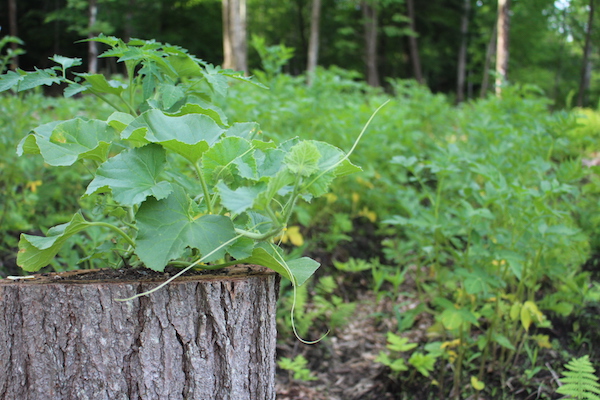
We grow a good bit of our own food on our remote solar-powered homestead here in Vermont, but there’s a big difference between providing your own fruit and produce and providing a year’s worth of calories.
Nonetheless, I have this dream sometime in the next decade we’ll devote ourselves to growing all our own food for one calendar year. It’s a full-time job to be sure, but everyone’s gotta have a dream. Odd as it may seem, this is mine.
In the meantime, a lot of our spare time over the past 5 years (and over the next decade to come) is devoted to reaching a point of food self-sufficiency.
Our permaculture orchard already produces year-round fruit, with honeyberries right after the first thaw, summer apples that ripen in July, mountains of berries, and storage apples that take us through the long Vermont winter.
In the woods, our cold climate nut orchard is just getting established, but our small scale maple syrup operation produces all the sugar we need.
Still, even with all this infrastructure, we’re still a long way from producing enough calories to survive without external inputs.
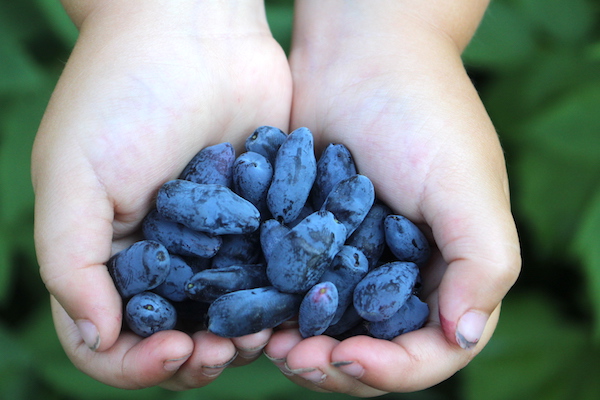
A while back a big survival news website asked me to write a comprehensive article on survival gardening, or more specifically, designing a survival gardening backpack. The idea was to design a backpack full of seeds and small hand tools that would allow someone to “go up into the mountains” and survive on the fruits of their garden indefinitely.
I laughed….Then I laughed some more….
Then I took a deep breath and tried to explain that it’s not nearly that simple.
Working virgin soil is incredibly hard work, and yields on unimproved woodland soil are depressingly low. Even with the best soil in the world, your first substantial harvest would be months away. Sure, radishes and salad greens could be harvested in about 4 weeks, but it’d be a hungry 4 weeks until you saw your first salad.
Even still, that salad won’t exactly fuel the hard labor required to bring in the rest of the harvest months later.
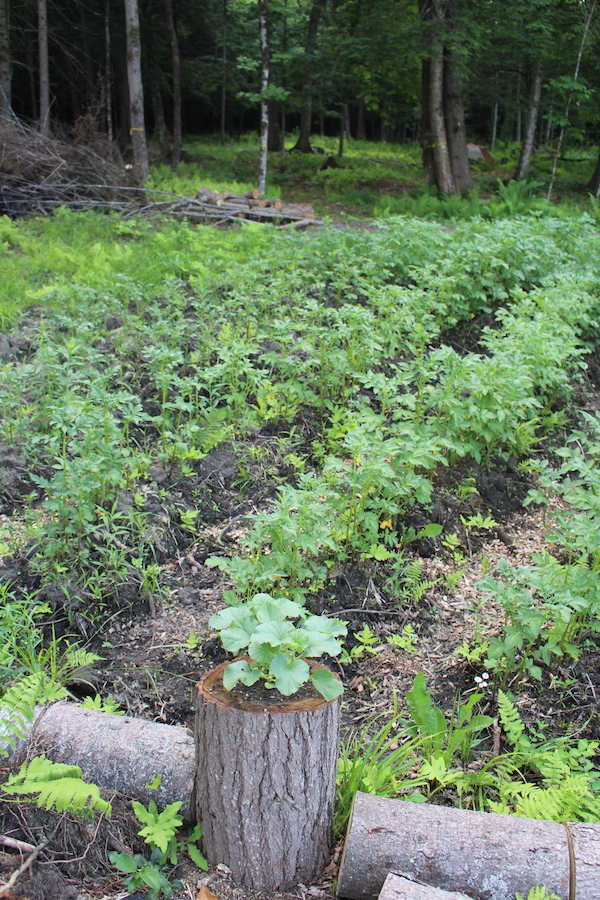
Nonetheless, it got me thinking.
If we had minimal time to clear virgin land in a desperate attempt to grow a substantial amount of calories, could it be done?
We’d already been planning on clearing a small patch of land near our pond for a new garden, so I decided to make a challenge of it.
Instead of slowly clearing the land, my husband and I both took the week off work and spent all day every day clearing land, hauling wood and turning soil. We’re not really into cruises you see, and anytime we take a vacation it’s always spent splitting wood or putting up fences anyway.
Everyone needs a hobby…
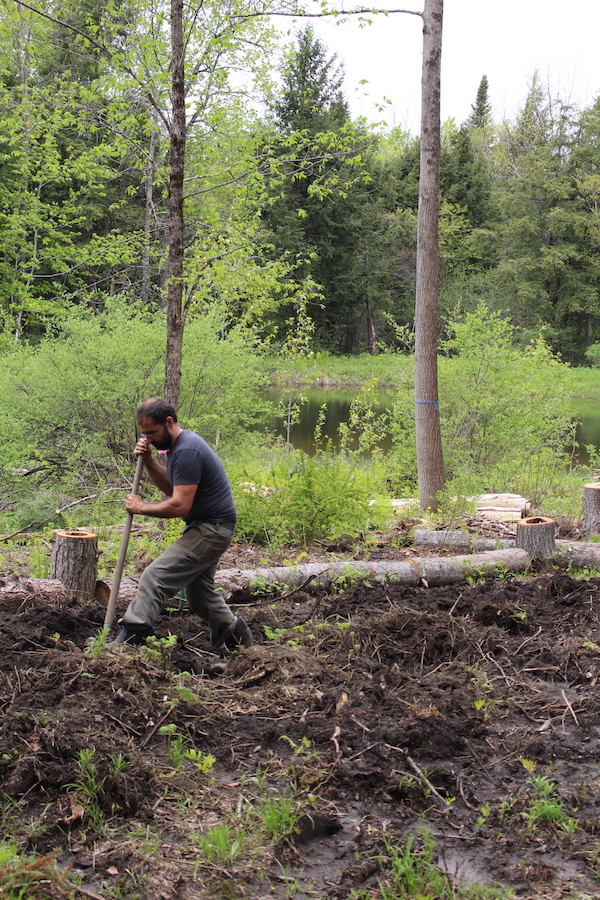
Survival Garden Yields
So after all that work, how much did our survival garden yield? Not much…
We planted 50 lbs of potatoes, but in unimproved woodland soil, the yields were exceptionally poor.
Generally, potatoes yield 10 to 25 pounds for every pound planted, depending on variety and growing conditions.
Ours yielded about 3 lbs per pound planted.
We joked that it almost made up for the calories we’d expended building the survival garden in the first place.
We grow potatoes in our garden, and our yields are always excellent. It’s not that we don’t know how to grow potatoes. The difference between improved garden soil and unimproved woodland soil is pretty stark.
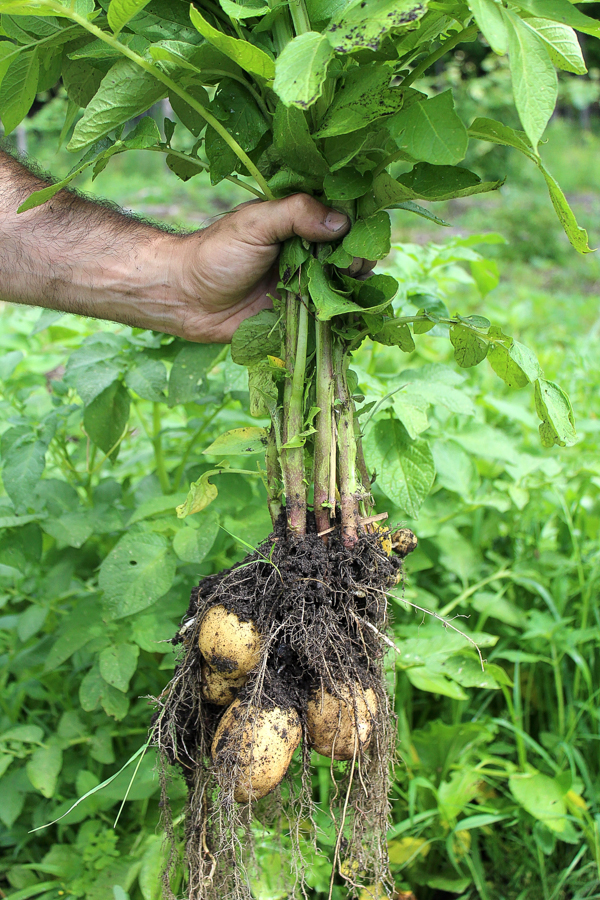
Likewise, storage squash, melon and tomato yields were hardly worth mentioning. The corn failed to grow altogether.
It was an incredible learning experience, and now we’re much more prepared for the road ahead.
Now in spring 2020, we find ourselves in an uncertain world, where store shelves are stripped and predictions for the future are dire.
We’ll be planting more food than ever this year, and expanding past the traditional borders of our garden. I hope this year is another “practice” year, but time will tell.
Here’s what we’re doing differently.
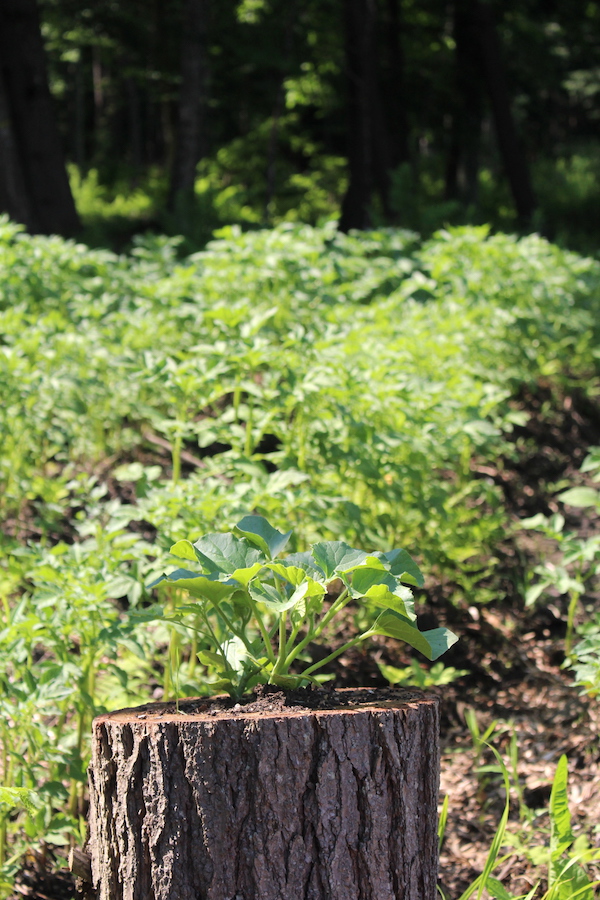
Survival Garden (Version 2.0)
Clearly, soil improvement is a huge priority. There’s no point cultivating more land area if it’s just not going to yield meaningful calories.
This year, we’re going to focus on intensive cultivation in our traditional garden space. Building trellises for vertical gardening, minimizing aisle space and otherwise making the most of our established square feet.
We’re also going to make use of last years’ “survival garden” by spot improving soil with all our available compost.
The book Gardening When It Counts, which I highly recommend, suggests planting storage squash in improved hills. A single bucket of compost in hills spaced about 6 feet apart means you don’t have to improve all the soil, just enough plant in a hill.
As the plants grow out, keep cultivating circles around the plant week by week, staying just ahead of the expanding vines. They’ll put down further roots as they go, and this strategy allows you to slowly work to improve the soil over the season.
In particular, he gives instructions for turning a lawn into a squash patch with this method, including plans for supplementing fertility. We’ll be one step ahead since we’re not breaking sod.
We’re also really focusing on increasing our compost production. Our kitchen scraps and chicken coop bedding are nowhere near enough to supply our garden.
We already use wood chips to make mushroom compost with winecap mushroom spawn. (We also use inoculated wood chips as mulch for perennial crops, and have had particular success growing mushrooms with strawberries.)
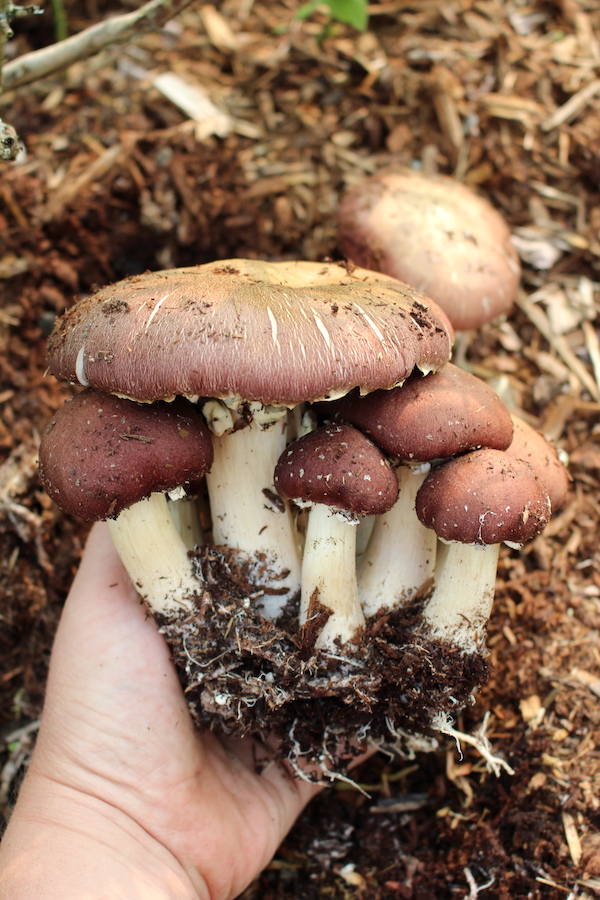
In an effort to “close the loop” we’re going to add humanure to our garden fertility plan. If you’re curious about the details, The Humanure Handbook has detailed instructions on capturing our own wasted manure and composting it, which if done properly, allows humanure to safely be used on food crops.
(Please do your research and educate yourself ahead of time if you want to use humanure, as improper use can have pretty nasty consequences.)
We’ve been saving wood ash all winter to help improve fertility as well since it supplements nutrients like calcium generally lacking in northeast woodland soils.
Since I know from experience that gardening on unimproved virgin soil is tricky, I’m also focusing on container gardening. It almost seems silly to devote energy and attention to small space container garden techniques, but it’s actually working out really well.
Our last “spring” frost doesn’t happen until early June, but I’m already growing cold-tolerant crops in containers. Last year we bought a garden tower to maximize space in our attached greenhouse, and I’ve been exceptionally happy with it. It holds moisture well, and rotates so I can make sure that sunlight gets to all sides.
(They also have completely indoor setups with lights, if you don’t have a greenhouse).
I’m already growing greens, peas, herbs, and even carrots in containers. We’ll be harvesting long before the last frost, and then I’ll plant the containers again with heat-loving veggies.
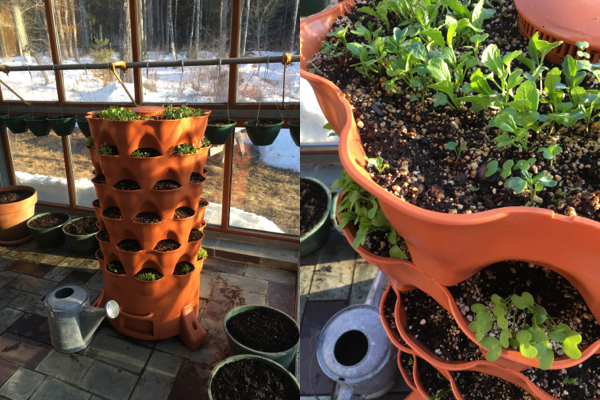
Crops for a Survival Garden
As for crops, we’re focusing on a mix of storage crops like potatoes, squash, onions, cabbage, and root vegetables.
A selection of tomato varieties for canning will help improve meals, and we’ll be growing tomatillos since they have high yields and are incredibly dependable.
We grow microgreens indoors year-round, and that supplies our salad needs (out of the reach of deer and woodchucks).
Since we have two small children at home, fresh fruits are important for morale and keeping our tiny helpers engaged. Husk cherries are a particular favorite. They grow like weeds and yield big crops of fruit that tastes like a cross between strawberries and pineapple.
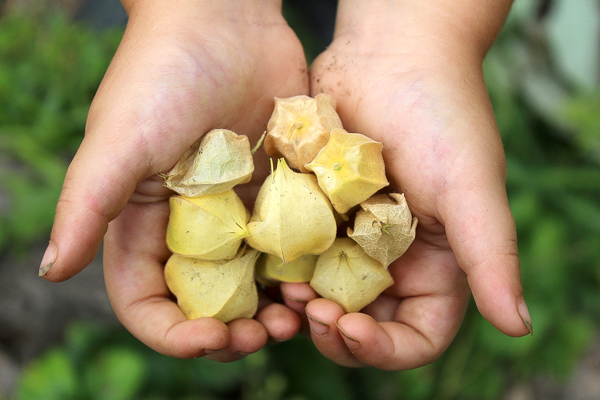
Regular old cherry tomatoes and cucumbers will get them to run out to the garden every morning too, as do the mammoth sunflowers we grow for seeds.
Beyond Survival Gardening
Though our goal is to grow as much food as possible, while keeping everyone happy and healthy, I know the garden alone won’t be enough.
We’ll be relying heavily on stored food and leftovers from last year’s canning. Last year I also wrote reviews of a bunch of different survival food companies, and I still have plenty of leftovers sealed up in the basement.
Our chickens are already laying heavily this spring, and I’m using every egg preservation trick in the book to ensure those calories don’t go to waste. They free range all summer, providing most of their own food, another thing to love about a hearty heritage breed.
Outside the garden, we’ll be foraging as much as possible, and last year’s project to identify and catalog more than 50 different edible fruits and berries will be handy for sure.
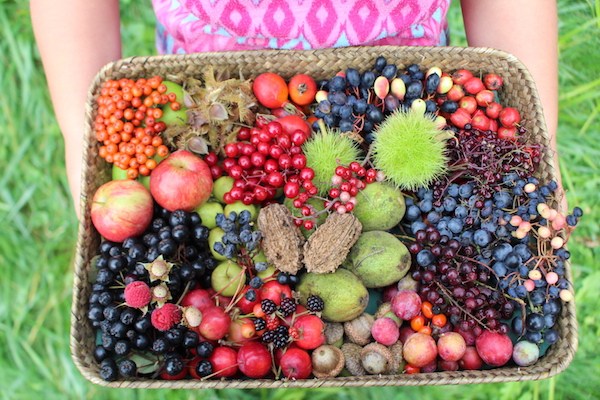
Whether you call it survival gardening or victory gardening, we’ll all be spending a lot of time on the homefront for the next year (or more). We might as well spend it producing food and bolstering our own self-reliance for the challenges that lay ahead.
We may all be isolated in our homes, but together we can do this!
More Ways to Harvest & Preserve Food at Home
Looking for more ways to put food on the table? Read on…
- Vegetables that Grow in Shade
- 100+ Canning Recipes to Preserve Everything
- 100+ Dehydrator Recipes
- Spring Foraging: 20+ Wild Edibles
- 70+ Venison Recipes
- 40+ Squirrel Recipes
- Eating Crow (Literally)
- Eating Acorns: 60+ Recipes from Around the World
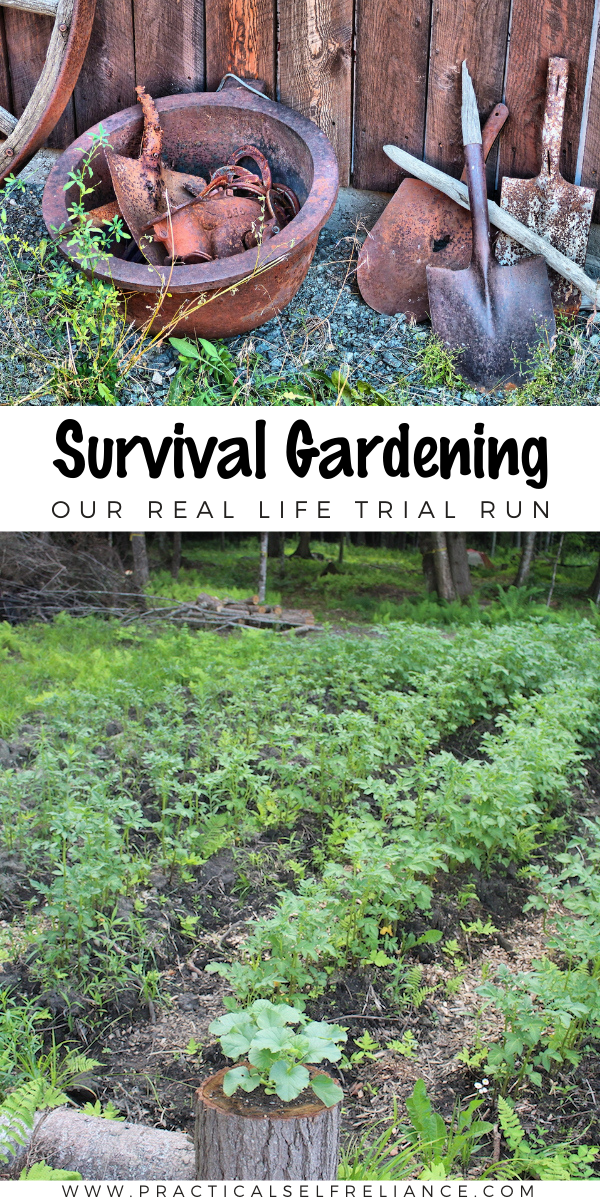
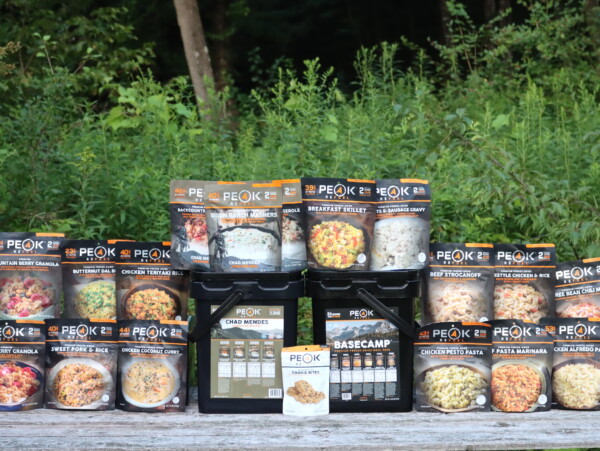
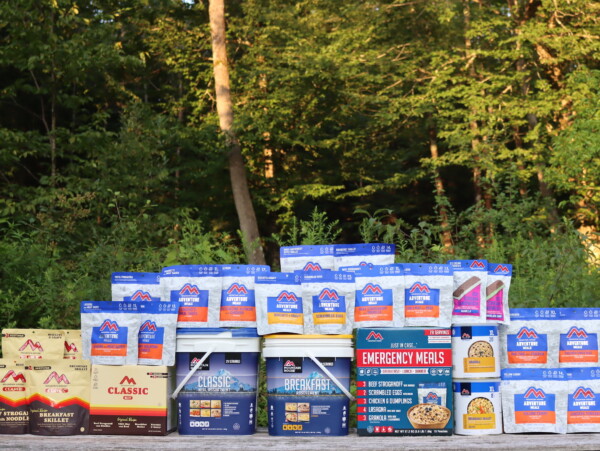
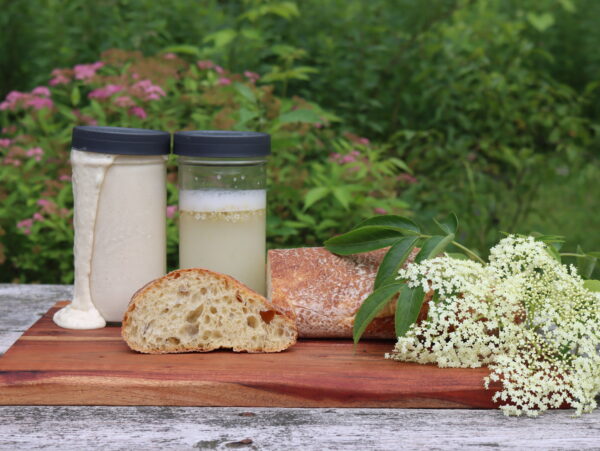
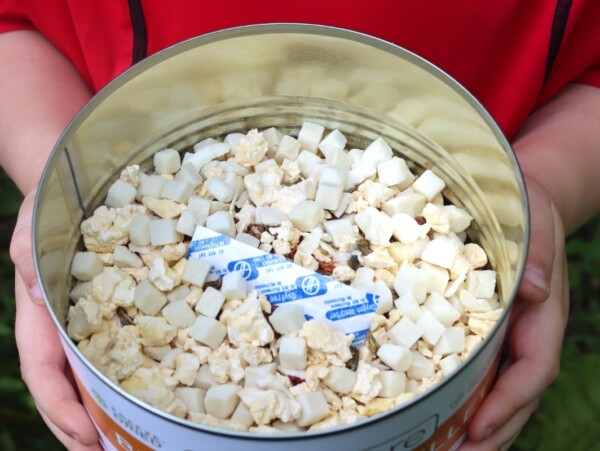
I’m really curious about what you have planted in the hollowed out log… a pumpkin? squash? I can’t really tell from the photo. Is there a specific purpose in doing so, or is it just for looks and being creative with planting containers?
That one is either a pumpkin or a melon there, it was a long time ago, but it’s a cantaloupe my kids wanted to plant if I remember correctly. We took down a tree that was completely hollow inside and they wanted to try it, so we filled it with soil and planted that to try. The main problem we had there was it required watering almost every day, as it dried out so much faster than the surrounding soil. We didn’t water anything in the surrounding area at all, we get enough rain if things are planted in the soil. But otherwise, it was a fine container.
This is a great insight into the realities of survival gardening. It’s clear that successfully growing your own food in a survival situation is no simple task. Your experience illustrates the importance of soil quality and the need for intensive cultivation techniques.
I’m impressed by your dedication to improving your gardening methods and learning from your past experience. Adapting to the challenges you faced is a crucial aspect of becoming more self-sufficient.
Your commitment to increasing compost production and focusing on soil improvement is a smart approach. Soil quality truly is the foundation of a productive garden.
Wishing you a bountiful harvest this year! Your determination and willingness to learn from past efforts are commendable. 🌱🥕🌽 #SurvivalGardening #SelfSufficiency #GardeningJourney 🌱🥕🌽
Please explain or leave a link on what cultivating circles around squash plants on the hill means
Thank you very much I love your blog !
Bee 🐝 well
Heidi
Ontario Canada
It just means turning over the soil around the hills as the plants grow. As in, you could make a hill in the middle of a lawn, and just the hill is weed/grass free. As the plant grows, turn the soil, break up sod and work out from the plant a foot at a time. You’re not cultivating a whole garden at once, so less initial work…but you are keeping up with the plants and keeping away weedy competition. Does that make sense?
It’s clear to me. Great idea!
Don’t forget to compost or fertilize with seaweed. Just wash it well to rid it of salt. It’s free and no one is going to complain if you harvest it from a beach. We strive to be food independent and it requires lots of year round work. In winter, I finish processing vegetables I didn’t have time to can. Yesterday, I made grape juice from frozen grapes. Soon, we’ll be tapping our maple trees and planting our seedlings indoors!
One thing no one talks about is simply that we as a society do not need the amount of calories that food corporations tell us we do. In the past, breakfast was mostly for the rich (who suffered far more health problems due to their sugar intake, NOT meat). Kids would be out playing all day and not come in until dinner. Now, childhood obesity is rampant, and activity levels are only a small part of the equation. One good meal a day is sufficient for a reasonably healthy person (even children, even pregnant women). If you disagree with any of this, please research it, instead of just shaking your head. Our society is fatter and sicker now than it ever has been, and all the advertising (disguised as dietary advice) is the main reason.
I come from a long line of Kentucky hill subsistence farmers. Now we live in Vermont and the climate makes it more difficult to raise enough food to avoid shopping at the grocery store. We have learned over the years that it makes sense to concentrate on crops that grow well for us and that are easy to store. Potatoes are good but require almost daily attention to pick off the Colorado potato beetles. Carrots are good but our thin soils are hardly deep enough without building raised beds so the roots have room to grow. Lettuce, spinach, chard and other salad greens are good but provide no protein to speak of. Squash,especially acorn squash because it keeps so well is always good to grow. That brings us to beans. Green beans, pole beans, wax beans are a staple but growing shell beans takes a lot of space. The saying about something not being worth a hill of beans rings true though. You can buy dried beans for a very small price hardly worth the effort. Corn takes a lot of space too and rapidly depletes soil nutrients and requires fencing to keep out the coons. We’ve raised goats, pigs, chickens and rabbits. Only the rabbits really earned their keep though the chickens were a close second. The goats were fun and we got milk but couldn’t bear to eat them. The rabbits were efficient but we hated slaughtering them. The pigs ate like pigs and our small family had a hard time producing enough waste food to feed them and the cost of grain exceeded the value of the meat. We have honey bees for honey but they are not easy. Varroa mites make raising them very challenging. Maple syrup is a good way to get sugar but sure burns a lot of wood to produce. One key to success? Compost. It has taken me 20 years to build my soil to where it needs to be for intensive food crop raising. I think that all these crops are worth the effort but if anyone thinks its easy or that you can raise these with less effort than the dollar value of your labor is dreaming. If you live in a cash poor economy then your labor becomes more valuable. Unfortunately it is easier to go to work for a large corporation, make a paycheck and just go buy food. But that wouldn’t be any fun at all.
So true! Thanks for sharing. It’s not easy but it sure is worth it in my opinion.
When the last of my ancestors came over from Europe in the 1840’s to my rural area, they had bad luck. The family story is that in the first winter, their team (horses) died and they had nothing to eat but turnips. So you never know when something like a turnip will save you. (I wonder if they weren’t rutabagas, not turnips after all.) Keep that garden growing!
Definitely rutabagas my favourite food ‼️
Thanks a lot for your great and honest work. Many people nowadays have not the slightest idea as they are used to get everything at the supermarket. Only thinking of prices, no idea of the work involved nor the other conditions must be met, like soilproperties, climate, seeds available ( or not) and the necessary utensils.
On our farm, when I was a child our grandfathet tended a vegetable garden and also rented out land for others, as he always kept telling us ,food and fresh air are the greatest assets for a stable community.
From early spring he worked in the garden daily. It was about one acre and fed a familiy of 7. Milk and meat came from the cattle, eggs from the chickens and wool from the sheep. Fruit from the orchard, It was a wel regulatedm sober and healthy life and very beautiful too. Our hearts go out to the millions that life in the big cities and have to stay indoors to be safe. The world needs your honest blog.
So glad to see someone write about this usually overlooked problem. I experimented with growing calories a few years ago. The 900 square foot garden was about half planted with high calorie, storable vegetables: potatoes, sweet potatoes, winter squash, beets and carrots. I had good yields for all but when I calculated the calories I had enough to feed my family of four adults for 10 days! In the rest of the garden we grew greens like chard and kale, lots of green beans, tomatoes, peppers and eggplants. It was very successful but I am under no illusion that I was being self-sufficient. I recommend The Resilient Gardener by Carol Deppe for ideas about growing significant amounts of calorie crops.
Love the website some great tips here, I’ll be certainly planting the crops you suggested!
Dear Ashley,
I am thoroughly enjoying your blog and I often feel that I can not keep up. I wish I had a calender in place with do this at this season, and walk in the woods now and collect that today. I really feel so strongly called to avail myself of any and all food and medicine that nature has to offer. I love how clearly you describe things and the photographs are gorgeous. I live in Keene, NH, but would really love to find out a system for how to try to keep up with you a little bit, and things like appropriate places to harvest, that will not either rob nature of all her bounty for just me, or piss off other people. Anyhoo, wondered if you ever take phone calls with more specific and direct questions in the moment?
Thanks, Deirddra Limoges
Unfortunately, I don’t do phone calls. I live on 30 acres with my family and there’s just not enough time in the day as it is. Maybe there’s a gardener or permaculturalist in your area that you could contact?
Cool experiment! Look at those winecaps! I’ve been waiting two years on a bunch of inoculated shitake logs. I think I chose logs that were too big? Maybe throw ’em in a pond for a week when it gets a bit warmer?
My husband and I were just talking about this! Over the last few years, we have taken several steps towards self-sufficiency (lots of canning, maple syrup making, saving seeds, raising animals, etc) but I know that it would be hard to make it through our Wisconsin winter. We talked about doing a “test run” just to see how long our food would really last us. Your words make me think about how hard it really was for the pilgrims and early settlers.
It looks like you may already be headed in this general direction, but it strikes me that in bang for the calorie-buck, building raised beds and creating compost sounds like your best course of action. In the Berkeley method, apparently you can make a yard of compost every three weeks, the challenge being to find enough raw materials both high at nitrogen and bulk th make the volume of soil you need. chicken manure is a great start, and If you have the means to mow large swathes of grass, that’s a great source of nitrogen as well. This of course also depends on having enough open area to put the beds, but makes all the hard-core turning of the soil unnecessary. You can also add cardboard or some other layer at the bottom of the bed to suppress weeds before filling it with compost. You may also want check out Hugelkultur, (not sure if that is the best spelling) Sepp Holzer’s pproach to creating soil. I honestly don’t know how long it takes for a Hugelkultur bed to bear any kind of food, though I did hear of a guy who planted raspberries on his and had incredible yields. The advantage is, in cold climates you can start one in the fall and it will continue to break down through the winter, possibly being plantable to large seeds such as squash in the spring.
Thanks for this article, it is really helpful and incredibly informative.
One thing you didn’t mention was eating the weeds and other wild vegetation while you are waiting for your garden to start producing (though of course that will not provide enough calories) and/or in addition to what you are cultivating.
I will use the info you shared in this post!
Yes! I should definitely add that in. Here’s a bit for now: https://practicalselfreliance.com/edible-weeds/
Read, read, read, and read some more. As an Ohio Certified Volunteer Naturalist and a Master Gardener Volunteer one of my most requested talks is: Edible Wild Plants and Foraging. There are many wild plants (also known as weeds) that are edible. Just because someone serves flowers in foods does not mean they are edible. Ex: A lady had heard that lilies were edible so she made a casserole using her Easter Lilies. All eight people ended up in the ER, three had to be hospitalized for several days. A few years ago, a retired Doctor told me that one of his children knew that Queen Anne’s Lace was edible so picked it and made a casserole for the family. What the person did not know was Hemlock is a “Look alike” to Queen Anne’s Lace. Within less then thirty minuets the two adults and three children were in the ER. Please take classes and study often. This is very important.
Our native American ancestors grow survival gardens all the time and they survived but they also fished hunted and gathered
I think that’s the big gap…knowledge of the land. Gardening alone will not get you through. But foraging and hunting, along with gardening as a supplement will do it.
My age, 75-yrs young and still planting and harvesting away. My children will be quick to say (jokingly), “We use to ask mom, ‘What’s for supper?’ Now, we ask, “What did we just eat?”‘ I very seldom plant a flower in my yard unless it is edible. That being said, I would like to purchase your books. Any suggestion on the best ones to have is appreciated.